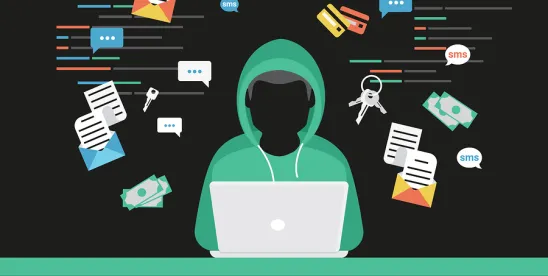I was recently helping a client in Tokyo respond to a serious and sophisticated cyber breach where hackers executed a transfer of nearly US$1M out of the client’s Hong Kong bank account. In this instance, the hackers had hacked into the CEO’s cloud-based corporate e-mail account and had determined a way to create a transaction that his intermediary company believed to be genuine. The hackers sat on top of the e-mail to intercept any queries and assure colleagues that this was an authorized transfer. The transaction was made on a Friday, in the hopes that it would not be noticed until the following week. Indeed, our client only realized that the transaction had happened on the following Monday, when he received by mail hard copies of the transfer documents from his intermediaries.
In these types of situations, it is essential to act quickly and to focus on the efforts most likely to bear fruit. But what to do when every second that passes makes it more likely that the funds have been transferred to other accounts in other jurisdictions?
Here are some critical things to consider, with many of these actions needing to occur concurrently:
Get legal assistance: In this case, it took the client over a week to find us, which led to him spending a lot of time on unfruitful projects and reduced his ability to recover the funds significantly.
Inform the banks: Notify your bank of the fraudulent transaction and request them to stop the transfer from your bank, if the transfer has not already occurred. If it has, notify the receiving bank that the money was a fraudulent transfer. Ask them to halt any onward transfers. Many banks have a fraud investigations team. See if you can involve them. Keep records of your requests and to whom you spoke.
File a Police Report: Filing a police report is important, but with whom do you file it? Unfortunately, it is not always immediately clear. In this case, our client spent more than a day trying to file a report with Japanese police and translate English documents into Japanese, only to find Japanese police had no real ability to proceed with the investigation, without a criminal lead in Japan.
It was in that process that our client approached us, and we advised to file the report with Hong Kong Cyber Police, where they will have most direct access to the bank accounts involved. As he was not in HK at the time, we assisted in filing a preliminary electronic report that helped to get things moving, while we prepared the documentation needed, worked with HK police to assign one of its cyber investigation units, and assisted the client in filing the more formal police report. Police can conduct their own investigation and usually can order a freeze of ill-gotten assets remaining in an account. In this case, despite the delay in getting the correct police involved, we were pleased that nearly half of the $1M illegally-transferred funds remained in the hackers’ HK account. The police were able to freeze these pending our filing court papers.
Where the funds have been transferred onward, there may be ways to trace it to ensuing banks. However, this may get complicated as the transfers may be across several accounts and countries. The formal process for law enforcement to seek assistance from police in other countries (called an MLAT) is time-consuming. However, it may be possible, if the situation warrants, to get cyber police from other nations to open their own local investigations. This may enhance the ability to follow the trail of where the assets went.
Take Legal Action to Halt the Transfer: Jurisdictions differ in what is legally possible, but many will have a legal procedure for you to obtain a court order requiring the banks to halt any further transfers, produce documents related to the fraudulent accounts, freeze any remaining assets, and order their return. In HK, we were able to file a Writ of Action, Indorsement and Injunction Application, seeking the seizure of the money left in the account. Usually, this leads to a default judgement (as often the defendant will not show up to contest the proceedings), and an eventual recovery by the client of the money left in the account.
Consider filing notice with the financial regulators: It depends on the jurisdiction, but claims may often be made with the regulators overseeing the banks. In this case, we were also able to send notices to the HK Monetary Authority to inform them of the fraudulent transactions. This may operate to give you the full-attention and assistance of the banks involved as they endeavor to show regulators of their efforts to stop fraudulent transactions, which may be part of organized crime activity.
Get Technical Assistance: It is important to understand how the hackers got in, what they have done while in the system and ensure that you have closed their access, including any potential backdoors. The hackers may have obtained information from the CEO’s account that will enable them to hack into other accounts as well, including other executives, clients, etc. Although most corporate IT departments are good at integrating IT solutions, they tend to be far less adept at identifying the actions and motivations of cyber-criminals.
In this case, the weakness was likely hackers obtaining the CEO’s email password either from an unsecured Wi-Fi network while traveling, or perhaps its use on other sites. Accordingly, changing the password is essential. In addition, many other questions need to be answered:
-
Did the criminals set e-mail rules to forward email to another account?
-
What emails were accessed and perhaps forwarded while in the system? Were other individuals potentially affected and at risk?
-
Did it involve employee/customer personal data (e.g. credit card info, or other sensitive data), or sensitive corporate plans, financials or other important information? Are any data breach notifications required?
-
How do you communicate with others when you are unsure whether your email and/or network is secure?
-
Was the email password also the executive’s network access password, perhaps providing even greater access to the corporate network? Should multi-factor authentication be implemented?
For these reasons, it is important to quickly involve a cybersecurity expert to identify what happened and ensure your system is now safe.
Review Cyber or Other Insurance: Consider whether you have any insurance that you may be able to make a claim upon as to the loss and/or the costs of legal and technical support. It is possible that such a risk is covered under a cyber-insurance, crime or other insurance policy the company has in place.
Create a Cyber Incident Response Plan and Test It: I often run cyber-preparedness drills for companies, which is where the company assembles its cyber-response team (usually made up of IT, Legal, Information Security, Compliance, PR, HR, etc.) and spends an afternoon running through a complex hypothetical breach situation. In doing those, it always seems that there is a point where it clicks for all involved as to why advanced preparation for a cyber-incident is so important. Having a Cyber Incident Response Plan in place and testing it greatly reduces the complexity and increases the chances of effectively handling such situations.
Consider the Legal System Involved: Every country will have different rules and regulations that may assist (or impede) you in your quest to get your money recovered. One might look at the transaction as likely the result of organized crime and have laws and enforcement procedures for that. Others may have other legal weapons you can employ to your benefit.
In addition, depending on whether personal data has been lost, many countries have laws around notifying the individual and government about the breach, sometimes within very short timelines. This landscape is quickly evolving as new countries pass such laws across the globe. For these reasons, it is important to work with a firm that has local capabilities and global reach and agility.
Executive Cyber-Fraud can be daunting. But if you prepare appropriately and react quickly and with focused effort, you have the best chance to recover the assets and lessen any ongoing risks.




 />i
/>i
